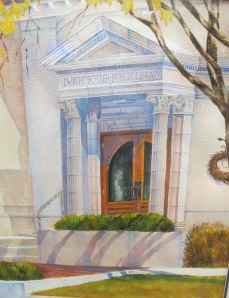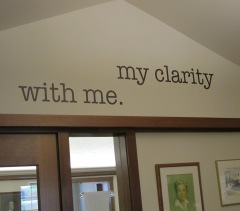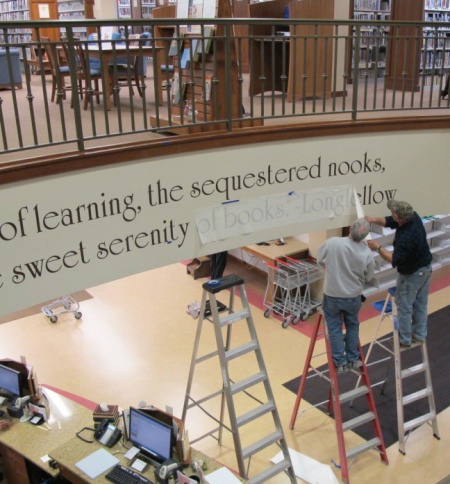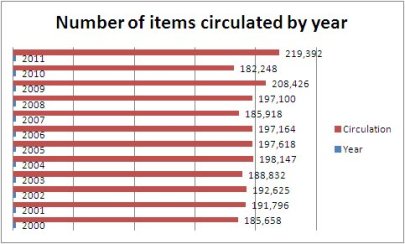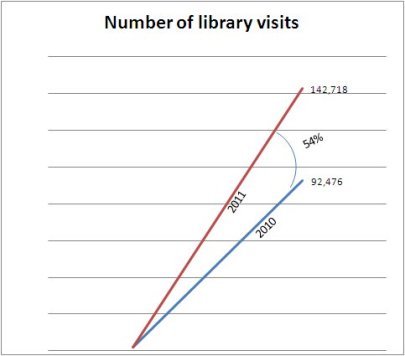When we were in the dreaming stage of planning our library expansion, our trustees and staff frequently visited libraries to gather ideas. There is no better way to get inspired than to visit libraries who have built, remodeled or expanded. It’s also a great way to learn what worked and, perhaps more importantly, what didn’t.
Recently, a group of trustees, citizens, and staff of the Irvin L. Young Memorial Library in Whitewater visited our library for a tour. I showed them behind the scenes of our library and answered their thoughtful questions. Sometimes I said, “If we could do it over, we’d change such and such.” More often I was able to say, “We talked about this a great deal when we were planning and are very pleased with how it’s working now.”
Kudos to all associated with the Irvin L. Young Memorial Library for continuing to do the homework necessary to find the solution to their library’s shortage of space in Whitewater. A project of this nature doesn’t happen overnight and it requires a commitment to the vision and willingness to keep working until all the pieces come together.
A couple of days after the tour, we received the following email from Whitewater citizen Jim Nies. I read it and was simply awestruck by Jim’s ability to convey the importance of libraries. He’s clearly got the vision thing covered!
The text of Jim’s essay is reprinted here (with his permission to share):
I was surprised when I first visited the Fort Atkinson Public Library several years ago, surprised to find a beautiful Spanish mission style building, with a warm and welcoming interior, stocked with a fine collection.
Visiting again after more than a year’s absence I was even more impressed. A large addition has been seamlessly integrated into the existing structure and the interior fashioned into a sensory delight.
A big, sunny children’s section, centered around a reading tree, occupies a good bit of the south side of the building. Nearby, story time room is entered by stepping through a wall into a field of toadstools, ferns, and trees. Young adult space, appropriately decorated, including several “diner” booths, is well stocked with YA lit.
A broad staircase sweeps up to the adult area where there are a number of private study rooms, many quiet private places, a large semi-circular periodical space featuring easy chairs spaced widely about, a very quiet research and reference area, and a large computer lab (all but one machine in use as I looked in).
This library is an amazing accomplishment is this time of economic difficulty and privatization fever, for a library is the archetype of the commons, the embodiment of the idea of sharing resources for the public good. The D.F. Public Library is also an amazing accomplishment in that its reconceptualization and remodeling was done at a time when the very necessity of libraries is in question—in the digital age a bricks and mortar building housing ink on paper books seems to many to be an unnecessary extravagance.
But consider this…
Children’s books will always be printed on paper. Although many great learning experiences are now available on the iPad, kids and their parents will always want real books. The resurgence of children’s book stores in this the age of Amazon and e-books proves the point. Kids and parents will always want to feel and smell and turn real pages, to browse through bins and piles, to listen to stories, to be with other kids.
Young adults will always want to socialize, and many will appreciate the chance to do it in a safe place, where they can talk about significant things, where they can sense the power of the knowledge that is their heritage, where they can be around and read about other interesting people.
The periodical room might seem an anachronism what with Google News, Huffington Post, and on-line editions. But still and always, a place to read and browse both what remains in print as well as all that’s digital, will be a place well liked by many. How pleasant many find it to sit for a spell immersed in current events, surrounded by the library’s quiet business, exchanging, perhaps, a word or two with a friend or passer-by. With wi-fi, e-reader loans, and patron access to all kinds of online subscriptions, D.F. provides the best of both worlds in one very pleasant place.
Quiet study rooms, group meeting and discussion rooms, nooks and crannies for individual reading, writing or contemplation—these are all here. And then there’s the computer lab, where people who don’t have ready computer and internet access at home can connect with online resources. The reference section stocked with often specialized but often very necessary print and online information, providing the knowledge that is power, is big and bright with lots of table space and lots of elbow-room.
And then the stacks. Books, multi-media materials, more books. A waste of space, perhaps when a Kindle can hold hundreds. But then…writing has been a part of us as humans since the dawn of civilization, the printed word for many centuries. As inhabitants of culture, ink is in our blood. Even the most technologically adept of us often like to read a printed book.
Really, books are here to stay and so we need a place to see and touch and feel and browse, to sample and discover, to sit and read a while—we a place for books. Dwight Foster is a lovely place for such. The stacks are brightly lit, well spaced, well organized. There are plenty of comfortable chairs.
The library in Fort Atkinson shows that properly conceptualized and creatively realized the public library has a secure future; it shows that public libraries can long continue their role as the intellectual and social hub of a community. The ten richest people in town couldn’t come close to affording what the Dwight Foster Public Library has to offer, but together the people of the town have created something wonderful, and it’s available to everyone. ~Written by Jim Nies, Whitewater, Wisconsin
Thank you, Jim!

 f space for all ages and will move the new large print books into that room. That means that *all* new books will now be on the first floor. We’re happy to offer our seniors better accessibility to a collection that is important to them.
f space for all ages and will move the new large print books into that room. That means that *all* new books will now be on the first floor. We’re happy to offer our seniors better accessibility to a collection that is important to them.

